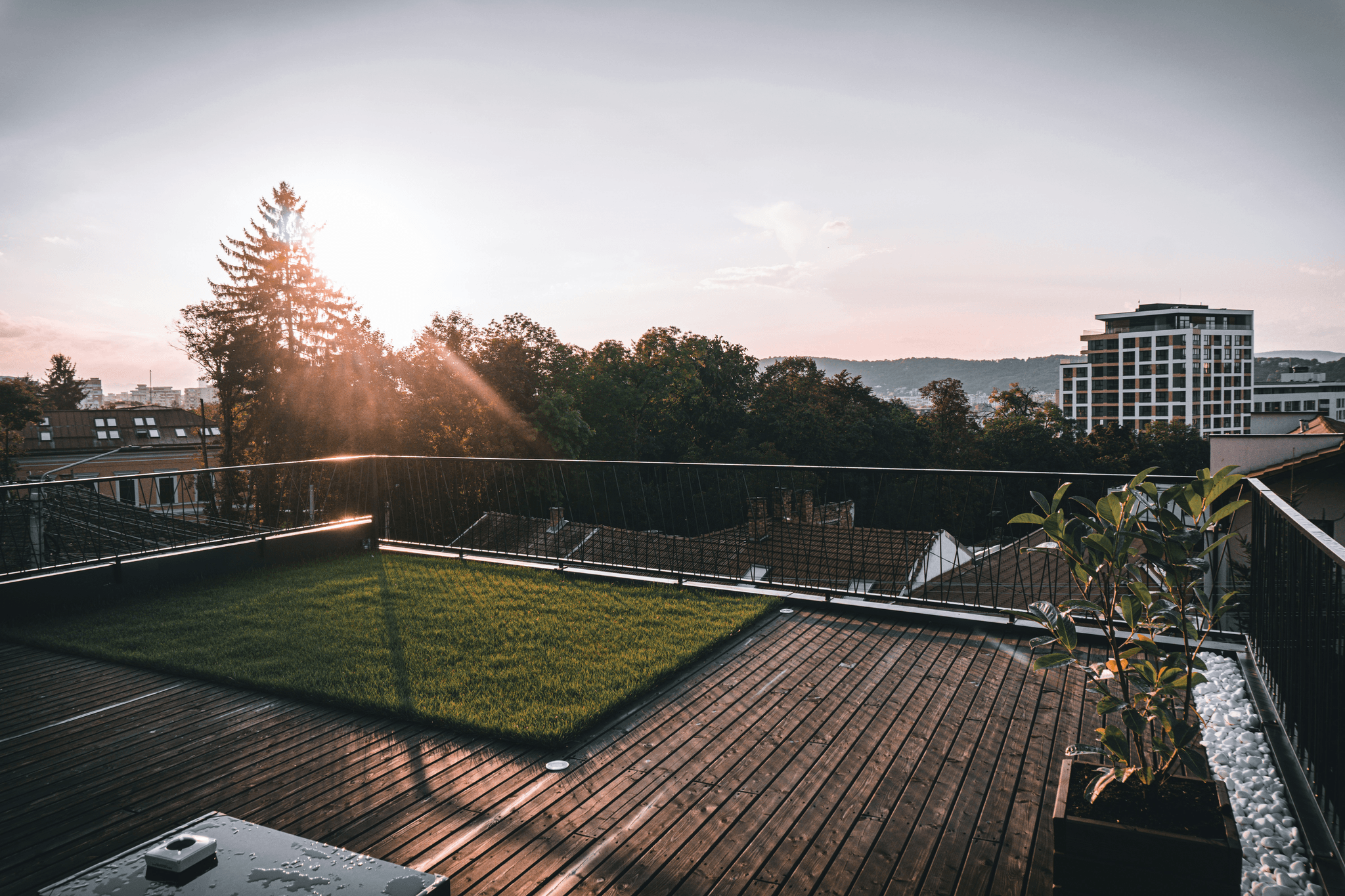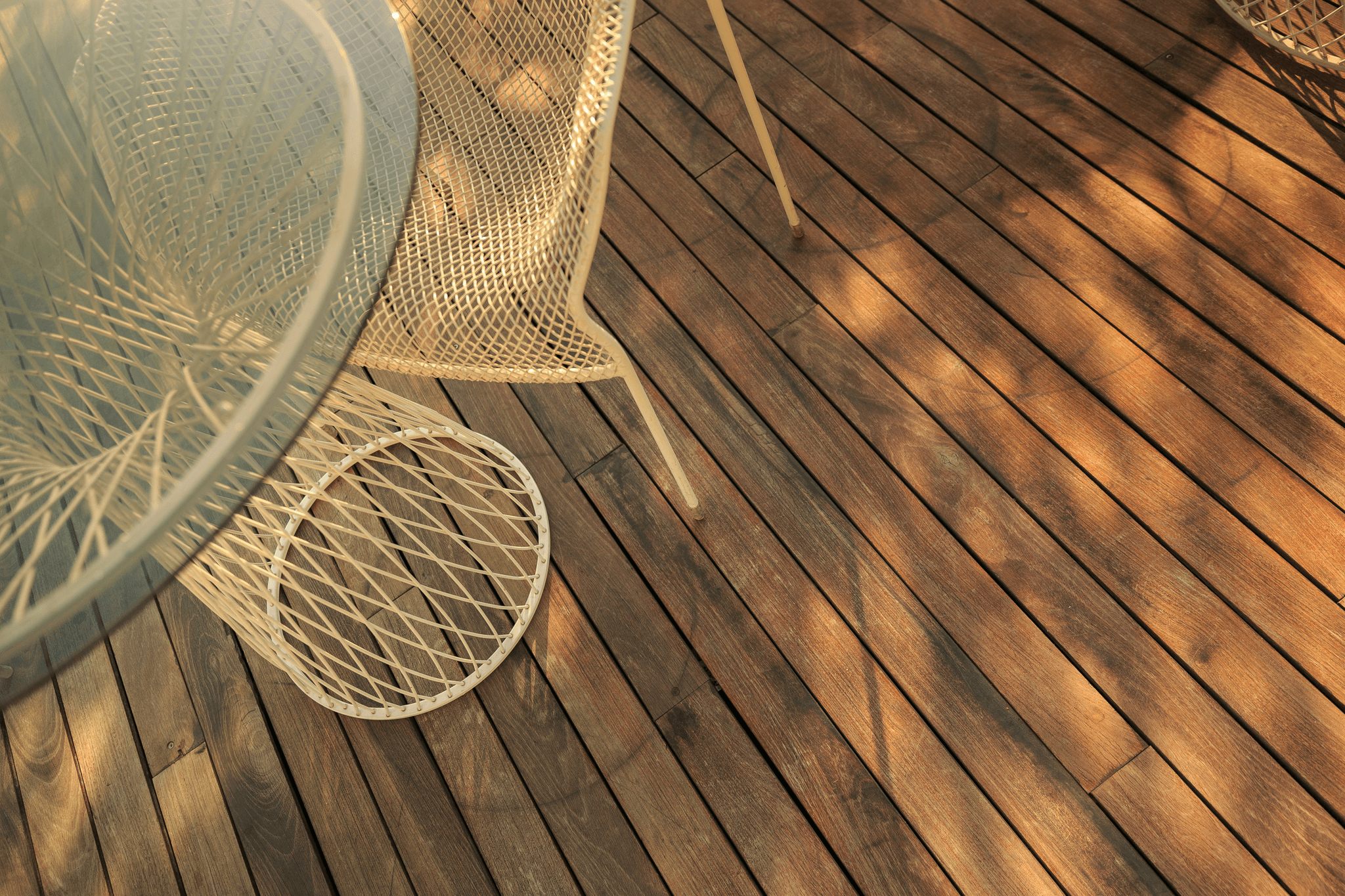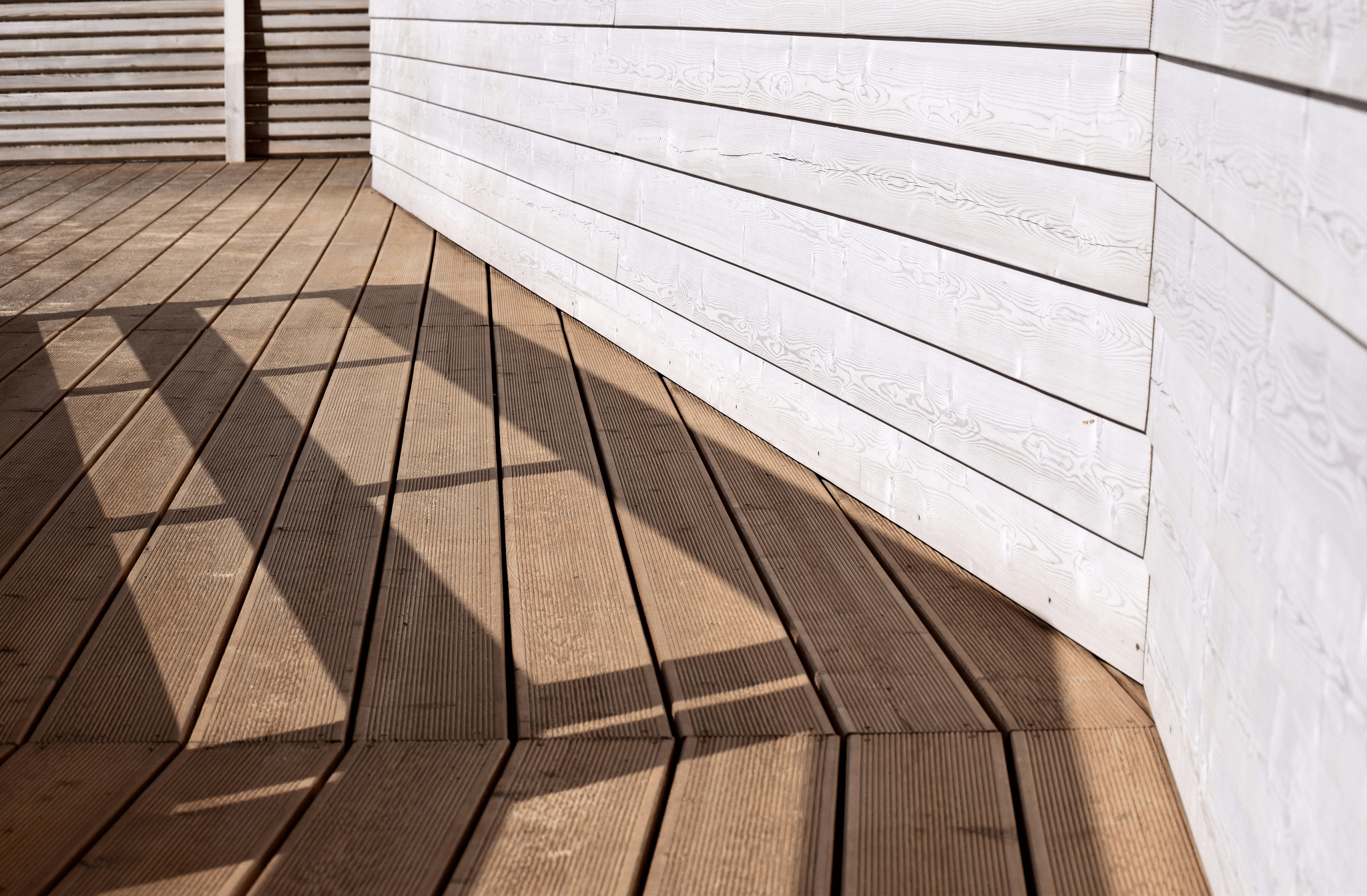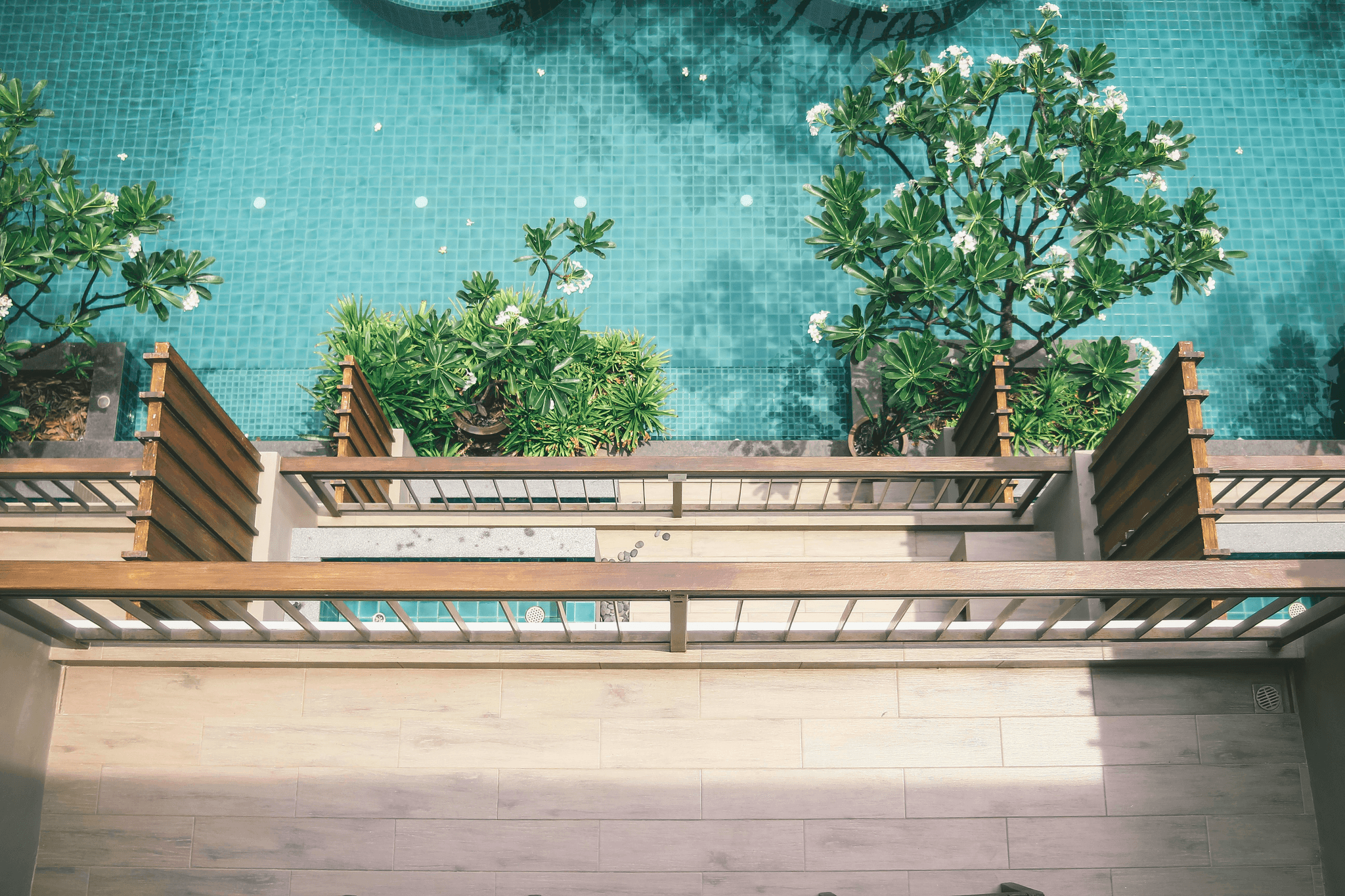Introduction

When it comes to enhancing outdoor spaces, the choice of decking material can make all the difference. PVC decking has emerged as a frontrunner, offering a plethora of benefits that traditional wood simply can't match. From durability to low maintenance, this innovative solution is reshaping how we think about patio decking.
Overview of PVC Decking Benefits
PVC decking, often referred to as plastic decking, is designed to withstand the elements while maintaining its beauty and functionality over time. Unlike wood, which can warp and splinter, composite deck boards made from PVC are engineered for resilience, providing homeowners with a worry-free outdoor experience. Additionally, these deck boards are available in various styles and colors, allowing for creative expression without compromising on performance.
Key Differences from Traditional Wood
One of the most significant differences between PVC and traditional wood lies in their composition and longevity. While wood requires regular staining and sealing to prevent decay and damage from moisture, plastic decking eliminates these concerns altogether with its waterproof properties. Furthermore, composite wood doesn't attract pests like termites or carpenter ants—an added layer of protection that any homeowner would appreciate.
Why Choose Composite Decking
Choosing composite deck boards means investing in a sustainable future without sacrificing aesthetics or functionality. These materials not only offer an eco-friendly alternative by utilizing recycled plastics but also provide unparalleled durability that stands up against harsh weather conditions. For those searching for the best composite decking options available today, PVC offers a perfect blend of style and substance that elevates any outdoor space.
What is PVC Decking?

PVC decking, often referred to as plastic decking, represents a modern evolution in outdoor living spaces. Unlike traditional wood, which can warp and splinter over time, PVC decking offers a more resilient alternative that stands up to the elements. This innovative material has gained popularity for its long-lasting performance and stylish appearance, making it a top choice among homeowners looking to enhance their patio decking.
Definition of Plastic Decking
Plastic decking is essentially a synthetic alternative to traditional wood deck boards. Made primarily from polyvinyl chloride (PVC), this type of decking material is designed to mimic the look of natural wood while providing superior durability and resistance to moisture. Homeowners are increasingly drawn to plastic decking because it eliminates many of the hassles associated with wood, such as rotting and insect damage.
Composition of Deck Boards
The composition of deck boards made from PVC typically includes a blend of recycled materials and additives that enhance performance characteristics. These composite deck boards are engineered for strength and flexibility, ensuring they can withstand heavy foot traffic while maintaining their aesthetic appeal over time. Additionally, many brands incorporate UV inhibitors into their formulations to prevent fading and discoloration from sun exposure.
Overview of Decking Systems
Decking systems that utilize PVC or composite wood are designed not only for aesthetics but also for ease of installation and maintenance. These systems often include interlocking mechanisms or hidden fasteners that create a seamless look without visible screws or nails on the surface. With options available in various colors and textures, finding the best composite decking system for your outdoor space has never been easier or more exciting.
Advantages of PVC Decking

When it comes to choosing the right material for your outdoor space, PVC decking stands out with a multitude of advantages. From its remarkable durability to its low maintenance needs, this innovative plastic decking option offers homeowners an attractive solution that can withstand the test of time. Let’s dive into why PVC decking is becoming a top choice among composite wood options.
Durability Compared to Wood
One of the most significant advantages of PVC decking is its unparalleled durability compared to traditional wood. Unlike wood, which can warp, crack, or splinter over time due to weather exposure, plastic decking is designed to resist such wear and tear effortlessly. With sturdy deck boards made from high-quality materials, you can enjoy your patio decking without worrying about constant repairs or replacements.
Moreover, many composite deck boards are engineered with advanced technology that enhances their strength against impacts and harsh elements. This means that even in extreme weather conditions—be it scorching sun or heavy rain—your PVC decking will maintain its integrity and appearance for years to come. So if you're looking for the best composite decking option that promises longevity and resilience, look no further than PVC.
Low Maintenance Requirements
Let’s face it: nobody wants to spend their weekends scrubbing and sealing their decks when they could be lounging in the sun instead! One of the standout features of PVC decking is its remarkably low maintenance requirements compared to traditional wooden surfaces. With plastic decking, you won't need to worry about sanding, staining, or sealing; a simple wash with soap and water will keep your deck looking fresh.
This ease of maintenance not only saves you time but also money in the long run since you won’t have recurring costs associated with upkeep on wood products. Plus, because composite deck boards are resistant to mold and mildew growth, you can enjoy peace of mind knowing your outdoor space is both clean and safe for family activities year-round. Who wouldn’t want more leisure time?
Eco-Friendly Characteristics
In today's world where sustainability matters more than ever before, choosing eco-friendly materials can make a difference for our planet—and PVC decking fits this bill perfectly! Many manufacturers produce plastic decking using recycled materials like old plastics and wood fibers, making it an environmentally responsible choice among available decking systems. By opting for composite wood solutions like these, you're contributing positively towards reducing waste while enhancing your outdoor living area.
Additionally, unlike traditional lumber that requires regular treatments with harmful chemicals (which can leach into soil), most PVC options are free from toxic substances that could harm local ecosystems over time. This commitment not only benefits nature but also provides homeowners with peace of mind knowing they’re making responsible choices regarding their patio decking materials. Embracing eco-friendly practices has never been easier—or more stylish!
Disadvantages of PVC Decking

While PVC decking offers numerous benefits, it’s essential to consider the potential downsides before making a decision. Understanding these drawbacks can help you weigh your options more effectively when selecting the best composite decking for your needs. Let’s dive into some of the key disadvantages that might influence your choice.
Potential Heat Retention Issues
One notable concern with plastic decking is its tendency to retain heat, especially in direct sunlight. Unlike traditional wood, which tends to stay cooler, composite deck boards made from PVC can become uncomfortably hot during warm days. This heat retention can make patio decking less enjoyable for bare feet and could limit its usability in sunny climates.
Higher Initial Cost
Another factor to keep in mind is the higher initial cost associated with PVC decking compared to traditional wood options. While these deck boards may save you money on maintenance in the long run, the upfront investment can be a bit daunting for budget-conscious homeowners. When considering your overall decking material budget, it’s crucial to evaluate whether this higher price aligns with your long-term goals.
Limited Color Choices
Lastly, while plastic decking comes in various styles and designs, it often falls short when it comes to color variety compared to natural wood options or even some composite wood materials. Homeowners looking for specific shades or unique finishes might find themselves limited by available selections within standard PVC offerings. If color customization is high on your priority list, exploring other decking systems might be worthwhile before settling on plastic alternatives.
Choosing the Best Composite Decking

When it comes to selecting the best composite decking for your outdoor space, several factors come into play. The right choice of decking material can significantly affect the aesthetics, durability, and maintenance needs of your patio decking. With an array of options available, understanding what makes a quality product is essential for making an informed decision.
Factors to Consider for Decking Material
Choosing the ideal decking material involves evaluating several key factors. First and foremost, consider the climate in your area; some plastic decking materials perform better in extreme temperatures than others. Additionally, think about how much maintenance you’re willing to commit to—some composite deck boards require more upkeep than others, while others are virtually maintenance-free.
Another important factor is color and style variety; while traditional wood offers a classic look, many modern composite wood options provide a range of colors that mimic natural wood grains beautifully. You should also assess the warranty offered by manufacturers; a longer warranty often indicates higher confidence in product durability and performance over time. Lastly, take into account installation requirements; some decking systems may be easier to install as DIY projects compared to others that might necessitate professional help.
Top Brands in Composite Wood
The market for composite wood has become quite competitive, with numerous brands vying for top honors in quality and innovation. One standout is Trex, known for its eco-friendly practices and wide selection of stylish deck boards that offer both aesthetics and long-lasting performance. Another notable brand is TimberTech, which provides a diverse range of colors and textures designed to withstand various weather conditions while requiring minimal upkeep.
For those seeking budget-friendly options without sacrificing quality, Azek offers exceptional plastic decking solutions that combine beauty with durability at a reasonable price point. Lastly, Fiberon has garnered attention for its attractive designs and commitment to sustainability—perfect if you want your patio decking to be as green as it is gorgeous! Each brand brings something unique to the table (or deck), so it's worth exploring their offerings before making a final decision.
Recommendations from Composite Decking Inc
When it comes down to choosing from the best composite decking options available today, Composite Decking Inc has some solid recommendations based on extensive research and customer feedback. They suggest starting with Trex’s Transcend line if you're after superior fade resistance coupled with rich color choices—ideal for homeowners who want their decks looking fresh year after year!
For those prioritizing eco-friendliness without compromising on style or performance, TimberTech’s Earthwood line deserves consideration due to its recycled materials combined with stunning aesthetics that mimic real wood perfectly. Finally, if you’re looking for affordability without skimping on quality or visual appeal, Azek’s Vintage Collection could be just what you need—it offers remarkable durability along with an impressive array of colors.
In summary, selecting the best composite deck boards involves weighing factors such as climate suitability, maintenance needs, aesthetic preferences, brand reputation—and don’t forget about warranties! By taking these considerations into account alongside expert recommendations from Composite Decking Inc., you can make an informed choice that will enhance your outdoor living space beautifully.
Installation Tips for PVC Decking

Installing PVC decking can be a rewarding project that transforms your outdoor space into a stylish and functional area. However, proper preparation and knowledge of materials are essential to ensure a seamless installation process. Whether you opt for DIY or hire professionals, understanding the ins and outs of plastic decking will make all the difference.
Preparing Your Patio Decking Area
Before diving into your installation, it’s crucial to prepare your patio decking area thoroughly. Start by clearing the space of any old deck boards, debris, and vegetation to create a clean slate for your new composite deck boards. Ensure the ground is level; if not, you may need to excavate or add soil to achieve an even surface that supports your chosen decking material effectively.
Next, consider drainage; proper water runoff will help prevent moisture buildup under your new plastic decking system. Installing a slight slope away from structures is advisable to facilitate this process. Once everything is cleared and leveled, it’s time to think about framing—using treated lumber or other suitable materials will provide solid support for your composite wood boards.
Tools and Materials You’ll Need
To install PVC decking successfully, having the right tools at hand is essential. Basic tools include a circular saw or miter saw for cutting deck boards, a drill for securing screws, and measuring tools like a tape measure and square for accuracy during installation. Additionally, having safety gear such as goggles and gloves will protect you while working with these materials.
In terms of materials, aside from your composite deck boards, you'll need fasteners specifically designed for plastic decking—these typically offer superior hold without damaging the material's integrity. Don’t forget about spacers; they help maintain consistent gaps between boards for drainage and expansion needs. With all these tools and materials ready to go, you’ll be set up for success!
Professional vs. DIY Installation
Deciding between professional installation or tackling the job yourself depends on several factors: budget constraints, time availability, and personal skill level with home improvement projects. If you're confident in your abilities—and have some experience with similar tasks—DIY can save you money while providing personal satisfaction as you create an inviting outdoor space with beautiful plastic decking.
On the other hand, hiring professionals may be worth considering if you're short on time or unsure about specific aspects of installing composite deck boards correctly—especially when it comes to intricate designs or custom layouts within your decking systems. Professionals bring expertise that can prevent costly mistakes down the line while ensuring that everything adheres to local building codes.
Ultimately, whether you choose DIY or professional installation should align with what fits best within your lifestyle while ensuring that you end up with one of the best composite decking solutions available today!
Conclusion

In wrapping up our exploration of PVC decking, it’s clear that this innovative option offers a wealth of benefits for homeowners seeking durable and low-maintenance alternatives to traditional wood. The long-term value of plastic decking lies in its resilience and ability to withstand the elements without succumbing to the wear and tear that often plagues composite wood. By investing in high-quality deck boards made from PVC, you’re not just enhancing your outdoor space—you’re also making a wise financial decision that pays off over time.
Long-Term Value of PVC Decking
When considering the long-term value of PVC decking, it’s essential to recognize how this material stands up against traditional options like wood. Unlike wooden decks that require frequent staining and sealing, plastic decking maintains its appearance with minimal effort, saving you both time and money in upkeep. Additionally, many manufacturers offer warranties on their decking systems, providing peace of mind knowing your investment is protected for years to come.
Maintenance Tips for Homeowners
To maximize the lifespan of your patio decking made from composite deck boards, regular maintenance is key—even if it's less intensive than wood care. A simple routine of sweeping away debris and hosing down the surface can keep your plastic decking looking fresh year-round. For tougher stains or spills, a mild soap solution will do wonders; just avoid harsh chemicals that could damage those beautiful deck boards.
Final Thoughts on Decking Solutions
Ultimately, choosing the best composite decking boils down to understanding your needs and preferences as a homeowner. While traditional wood may have its charm, the advantages offered by PVC are hard to ignore—from durability to eco-friendliness—making it an attractive alternative for modern living spaces. Whether you're revamping an existing deck or starting from scratch with new decking systems, plastic decking proves itself as a smart choice for both aesthetics and longevity.
